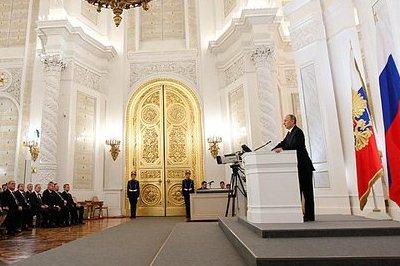Legislative process
The legislative process is a procedure for the approval and entry into force of legislative acts. The procedure begins with the introduction of the project and ends with the publication of the approved act.
In Russia, the following stages of the legislative process are determined:
1). Legislative initiative. The Council of Federation, the President, the State Duma deputies, the Government, legislative bodies in the subjects of the Federation, the Courts (Constitutional, Arbitration, Supreme and Supreme) have the right to submit drafts to the State Duma.
2). The legislative process contains a review of the project. As a rule, it is considered three times. In the first reading, the State Duma analyzes the general provisions, in the second - a thorough study and amendment is carried out. In the third reading, the bill is either approved or not in general.
3). Adoption of laws. In the Russian Federation this procedure is carried out by means of voting. Federal acts are approved by a majority vote. The adoption of laws on referendum, acceptance of a new entity, military or emergency status in the state shall be carried out with the approval of two thirds of the votes. The approved acts are submitted to the Federation Council within five days.
4). The legislative process also includes the stage of approval of laws in the Federation Council. Federal acts are considered approved if more than half of the members cast their vote for them. The Federal Constitutional Laws are approved if more than three-fourths of all members vote for them. The rejection or approval of the act must be made no later than two weeks.
5). The law is signed by the President of the country. The head of state can, in turn, approve the act or veto it. The President must take a decision within two weeks. The rejected law is sent back to the State Duma for revision and making the necessary amendments. The presidential veto is overcome if two thirds of the members of the State Duma and the Federation Council vote for approval of the act in an earlier approved version. In this case, the law must be signed by the President in a week's time.
6). The publication of the act and its entry into force. The legislative process is finalized by the promulgation of the law, which was signed by the President. It is carried out within a week. The approved and signed act enters into force within ten days (unless specified otherwise) after the publication of its text in special publications.
The rule of law in time begins withthe moment it entered into force, and ends when it lost its legal force. This may be due to the expiration of the validity period of the law (for example, martial law was imposed for a period of three months), direct cancellation or replacement of one act with another. Normally, normative acts do not have retroactive effect. This means that in the case of an offense, the law in force at the time it was committed is used. An exception to this may be new laws that provide for the elimination or mitigation of liability for an illegal act that has taken place, or other situations specified in a special order.
There are restrictions of legal norms inspace. Certain laws are effective only in specific territories. So, for example, the approved normative acts in one state do not operate in another country. Certain laws may only be effective within a particular region. The definition of norms for activities beyond national borders is implemented by special agreements or by legal acts of the respective countries.
As a rule, laws apply to allpopulation of the state, as well as foreign citizens and stateless persons who are on its territory. In other cases, the text of the normative act separately identifies those persons to whom its effect extends.
</ p>

